How to Efficiently Check the Quality of Dining Chairs for Furniture Purchasing Groups?
- Sunbin Qi

- Jan 20
- 13 min read
By: Sunbin Qi, CEO of ASKT
Hello, I’m Sunbin Qi, the CEO of ASKT. Over the past 20 years, I’ve dedicated myself to serving furniture retailers and wholesalers across Germany, the Netherlands, and Switzerland. Whether you’re a furniture purchasing group, product manager, or sourcing professional, you already know how important it is to procure the right products. In the dining chair segment, making the right decisions can shape your brand’s reputation, your profit margins, and—most importantly—your customers’ satisfaction.

In my experience, efficiently checking the quality of dining chairs doesn’t just prevent returns and complaints; it also builds trust. It reassures your customers that you care about the safety and comfort of every person who sits in those chairs. Yet, quality control can be a complex process, with multiple layers of testing, from frame strength to upholstery durability. In this blog post, I’ll walk you through a comprehensive approach on how to efficiently test the quality of dining chairs, including practical steps and considerations that furniture buying groups should keep in mind. I’ll also share how we at ASKT integrate rigorous testing and quality assurance into our own processes, so you can see exactly what you should look for from a specialized manufacturer.
Why Quality Testing Matters More Than Ever
Protecting Your Brand and Customer Loyalty

As a furniture purchasing group, you’re supplying dining chairs to various retailers, online platforms, or even hospitality chains. Customers and end-users form long-lasting impressions of a brand based on the first few uses of a product—whether it’s sturdy and comfortable, or whether it shows signs of wear within a few months. A substandard dining chair doesn’t just result in returns or complaints—it can damage your reputation in ways that are hard to recover from.
Even if you don’t sell directly to consumers, negative feedback often travels upstream in today’s digital world. Retailers share their experiences with importers, sourcing managers talk to each other at trade fairs, and e-commerce platforms have public review sections. A single point of failure in quality testing can magnify rapidly. Therefore, having a well-defined and efficient quality control protocol helps maintain trust across the supply chain.
Meeting Safety and Compliance Standards

Within the European Union and the UK, regulations for consumer goods can be strict. Many countries also have their own localized guidelines. As a result, ensuring compliance with recognized standards—like EN 12520 or BIFMA—becomes an integral part of doing business. Overlooking these requirements can lead to legal complications, potential fines, or even forced product recalls.
When you work with a supplier who already understands and complies with these standards, you minimize risk and streamline your path to market. This not only saves time and money but also mitigates the potential for future disputes or negative publicity. At ASKT, we’ve integrated these regulations into our routine testing processes so that we stay aligned with regional norms, from Germany and the Netherlands to Ireland and the UK.
Reducing Long-Term Costs and Boosting Profitability
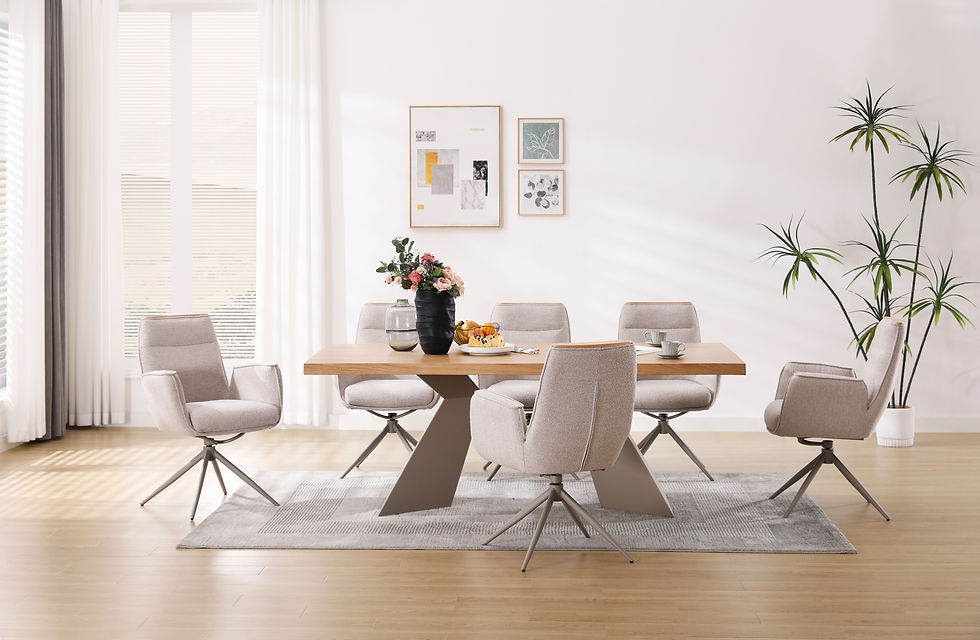
Spending time, effort, and resources on robust quality testing may feel like a burden initially, but it pays off in the long run. An inadequate testing process often leads to higher defect rates, more returns, and wasted inventory space. By focusing on thorough, efficient quality control from the outset, purchasing groups can ultimately reduce warranty claims and streamline logistics. This cultivates stronger supplier relationships, more predictable margins, and healthier growth trajectories for all parties involved.
Identifying Critical Structural and Material Factors
Evaluating Frame Construction
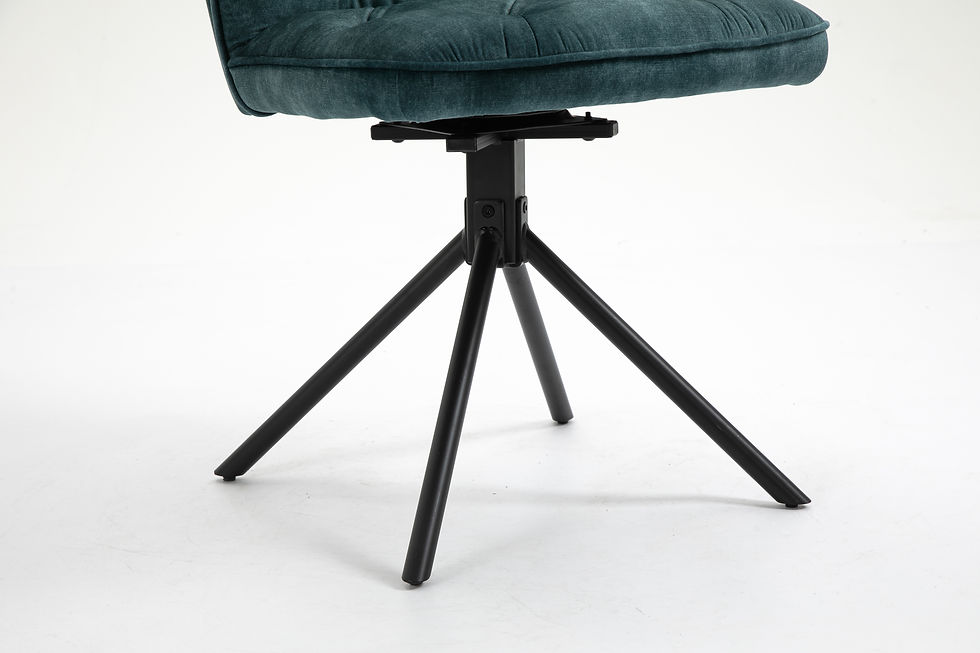
The frame is the heart of any dining chair. Whether it’s wood, metal, or composite materials, the frame must be robust enough to endure daily use under various conditions. A metal frame, for instance, relies on strong welding to maintain structural integrity over years of repeated sitting and shifting. Any inconsistencies—like visible gaps, weak seams, or poor soldering—can compromise a chair’s stability.
For wooden frames, both the type of wood and the construction technique matter significantly. Solid hardwoods often provide higher durability. Plywood frames can be an economical choice if they are well-made and meet specific load-bearing criteria. Ensure that the supplier sources wood responsibly, with recognized forestry certifications if possible.
Checking Hardware Quality
Beyond the frame itself, the hardware—bolts, screws, washers, and brackets—plays a pivotal role in preventing chairs from wobbling or collapsing over time. When hardware is subpar or fails to meet the necessary load-bearing standards, even the best frames can’t compensate. That’s why it’s beneficial to:
Confirm that screws and bolts are made of a high-quality metal, such as stainless steel or durable alloy.
Check whether hardware has protective coatings to prevent corrosion, especially if the chairs might be used in high-humidity environments or near kitchens.
Ensure that the hardware aligns well with the frame and doesn’t loosen easily over time.
These seemingly small details can dramatically influence the overall performance and lifespan of a dining chair.
Prioritizing Material Selection
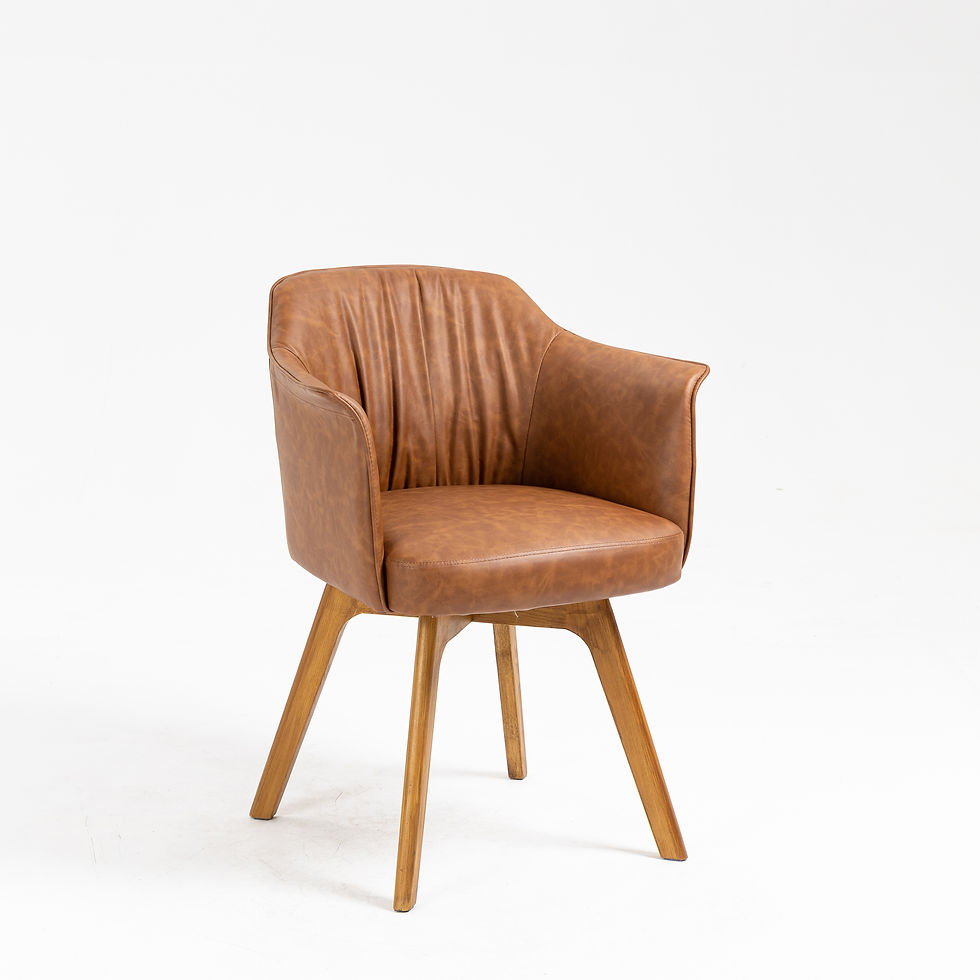
Material selection extends beyond the frame. For instance, choosing appropriate fabrics, faux leather, genuine leather, or even plastic composites can directly affect how the chair performs and is perceived. Think about:
Usage Context: Will the chairs be placed in high-traffic restaurants, or are they intended for domestic dining rooms? Heavier usage settings typically require more durable surfaces and finishes.
Regional Preferences: Different markets have different aesthetic preferences and climate conditions. In Germany, for example, certain upholstery tones or textures might be more popular than in the UK or Slovenia.
Cost-Effectiveness: Balancing cost and performance is key. High-end materials offer longevity and premium feel, but they might push the product’s retail price too high. On the other hand, cheaper materials can degrade quickly, leading to negative feedback and possible returns.
Focusing on Upholstery and Comfort
Assessing Fabric or Leather Durability
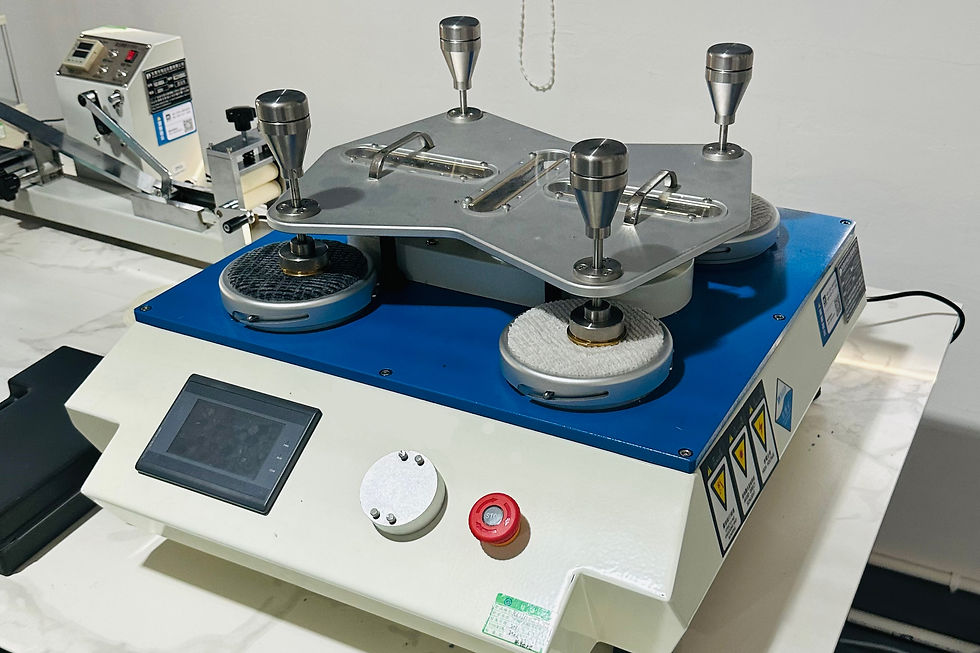
The upholstery of a dining chair serves a dual purpose: aesthetics and functionality. A beautifully upholstered seat can make a strong impression in showrooms or on e-commerce listings. But the real test lies in how well that upholstery holds up after regular use and cleaning. Some fabrics might fade if exposed to direct sunlight for prolonged periods, while others may snag or tear easily.
It’s beneficial to look for details such as:
Color Fastness: Fabrics that maintain color even after washing or exposure to sunlight.
Abrasion Resistance: Materials tested for durability under continuous rubbing or contact.
Stain Resistance: Chairs used in restaurants or family homes face inevitable spills, so robust stain-resistant treatments can significantly extend product life.
Selecting the Right Cushioning
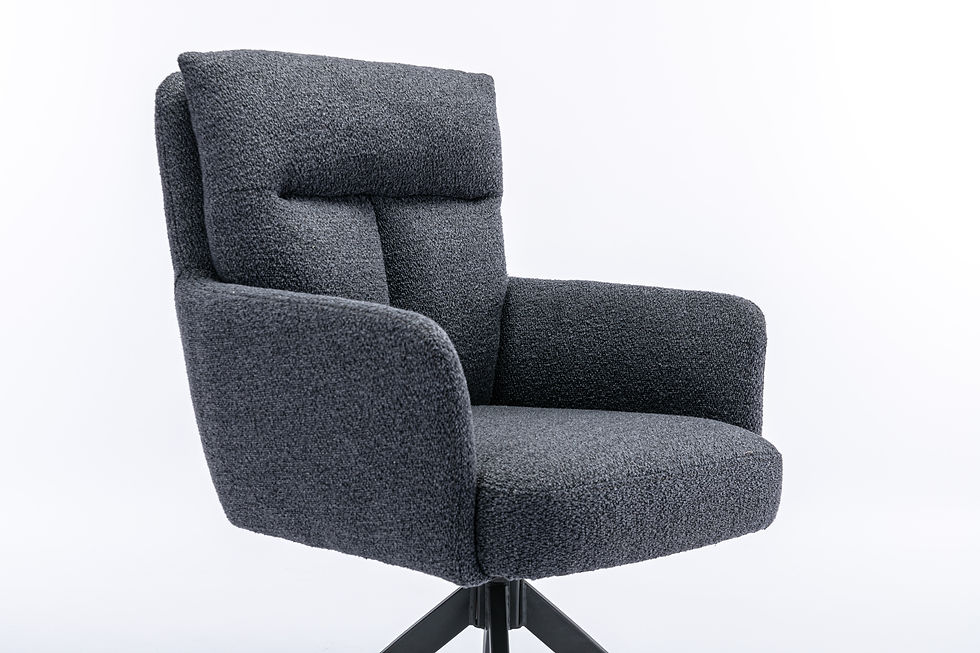
Comfort is often the deciding factor in a customer’s purchase decision. Cushion foam density, thickness, and rebound rate all matter. Foam that’s too soft flattens rapidly, while overly dense foam can feel stiff and uninviting. Striking a balance ensures that the seat remains comfortable over time.
It’s often advisable to test a variety of foam densities—sometimes measured in kilograms per cubic meter (kg/m³)—to see which best meets your project requirements. Thick, high-resilience foams tend to maintain their shape longer, but the initial cost can be higher. For medium-usage settings, a mid-range density could suffice, provided it’s been validated for longevity.
Balancing Ergonomics and Aesthetics

A well-designed dining chair isn’t just about how it looks; it’s also about how it feels when you sit in it. The seat height, backrest angle, and depth all influence comfort. Ergonomic designs that follow the natural curvature of the spine reduce fatigue and promote good posture, which is especially important in regions where family meals can last for hours.
When selecting or customizing chairs, furniture buying groups should:
Ask about the design rationale behind seat angles and dimensions.
Inquire whether prototypes were tested for extended sitting periods.
Consider adjustable elements, although these might add complexity and cost.
In many cases, a slight shift in the backrest angle or seat depth can significantly enhance the overall user experience, leading to higher customer satisfaction.
Conducting Safety and Durability Checks
Overview of Standardized Tests

Safety and durability tests aren’t merely about ticking boxes. They’re about replicating real-life usage—often compressed into a shorter timeframe—to see whether a chair can stand up to normal wear and tear. Commonly, manufacturers or third-party labs may conduct tests like:
Seat and Back Static Load Test: Determines if the chair can handle designated weight without structural failure.
Seat Impact Test: Simulates repeated sitting down or even plopping down abruptly.
Backrest Impact Test: Checks how the backrest holds up under forceful contact.
Armrest Durability Test: Ensures armrests don’t crack or loosen when subjected to downward force.
Leg Stability Tests: Assesses how the chair stands up against forces from different angles.
When you see a chair advertised as compliant with certain European (EN) or North American (BIFMA) standards, these claims are generally tied to these types of tests.
Verifying Actual Weight Capacities

Although many manufacturers specify a weight limit, it’s important to confirm how and when this limit was tested. Some may base their claims on theoretical calculations or minimal testing. In a proper scenario, the chair is physically tested to withstand a certain static load without any bending or breaking.
For high-traffic environments—such as restaurants, hotels, or cafeteria spaces—purchasing groups should aim for chairs with higher load capacities. While domestic users might never exceed a certain weight threshold, public settings have diverse users. Choosing a robust option from the start can prevent mishaps and potential liability issues.
Emphasizing Tip-Over Prevention
A critical yet sometimes overlooked aspect of dining chair safety is its stability in various positions. A well-balanced design ensures that the chair doesn’t easily tip forward, backward, or sideways if someone leans or shifts their weight. Special tests, such as tip tests under standard protocols, help confirm that the chair remains stable on all four legs even under sudden shifts.
When evaluating a potential supplier, it’s wise to ask about any specific measures they’ve taken to improve stability. Details like the geometry of the leg placement, weight distribution, and the presence of anti-slip leg caps can make a difference.
Building a Comprehensive Quality Control Protocol
Defining Clear Inspection Benchmarks

To efficiently test quality, you need structured benchmarks that define acceptable standards for each component of the chair, from the frame to the final packaging. It’s helpful to prepare checklists that include:
Frame welding or joinery quality
Hardware grade and corrosion resistance
Upholstery stitching and finish
Cushion density and resilience
Overall load-bearing capacity
When these benchmarks are documented in a clear, concise manner, it’s easier for everyone—factory workers, inspectors, and purchasing managers—to stay aligned.
Conducting In-Process and Final Inspections
Quality control shouldn’t be limited to final inspections alone. In fact, many issues can be caught and resolved more efficiently when they’re identified earlier in the manufacturing process. If a batch of frames has been welded incorrectly, for instance, discovering that sooner rather than later prevents the rest of production from continuing with flawed components.

A typical approach might involve:
Initial Inspection: Reviewing raw materials, hardware, or partial assemblies.
Mid-Production Check: Ensuring that critical steps, like welding or upholstery, meet the required standards.
Pre-Shipment Inspection: Confirming that the final product is free from defects and matches the approved samples.
By distributing inspections throughout the production timeline, purchasing groups can reduce surprises and improve overall consistency.
Including Randomized Spot Checks

Even if you have well-defined protocols and a trustworthy supplier, it’s still valuable to perform random spot checks. A randomized approach can uncover anomalies that might have slipped through standardized inspection steps. If an entire batch meets your quality standards, spot checks add an additional layer of reassurance.
When working with a large order, consider checking not just a single product out of a large batch, but multiple pieces from different production runs. This sampling approach can reveal if problems are isolated incidents or systemic issues needing broader attention.
Leveraging Professional Testing Equipment and Expertise
Partnering with Manufacturers That Have Dedicated Testing Labs

Setting up your own test facility can be expensive, especially for smaller or medium-sized furniture purchasing groups. Partnering with a manufacturer that already owns specialized testing equipment can save significant time and money. For example, we at ASKT have invested around $20,000 in 12 testing devices for color fastness, load tests, seat impact, and more. This specialized equipment allows us to replicate various usage scenarios and verify each chair’s resilience.
When you’re in discussions with a prospective supplier, it’s a good idea to ask about the testing facilities they have. If they own and regularly use professional-grade equipment, you can be more confident in the consistency of their outputs. It also indicates a level of commitment to quality, which often bodes well for long-term partnerships.
Training and Expertise of Quality Control Teams
Advanced equipment alone doesn’t guarantee quality results—it also requires personnel who know how to use and interpret it properly. A well-trained QC team can catch nuances that a cursory glance might miss. At ASKT, we employ 11 quality inspection and testing professionals who each wear a video recorder during inspections. This not only ensures accountability but also allows us to revisit any inspection segment if questions arise later.
When you’re evaluating a supplier, consider asking about the background or qualifications of their QC team. A robust training regimen, combined with practical experience, typically leads to more accurate and reliable quality assessments.
Value of Continuous Improvement
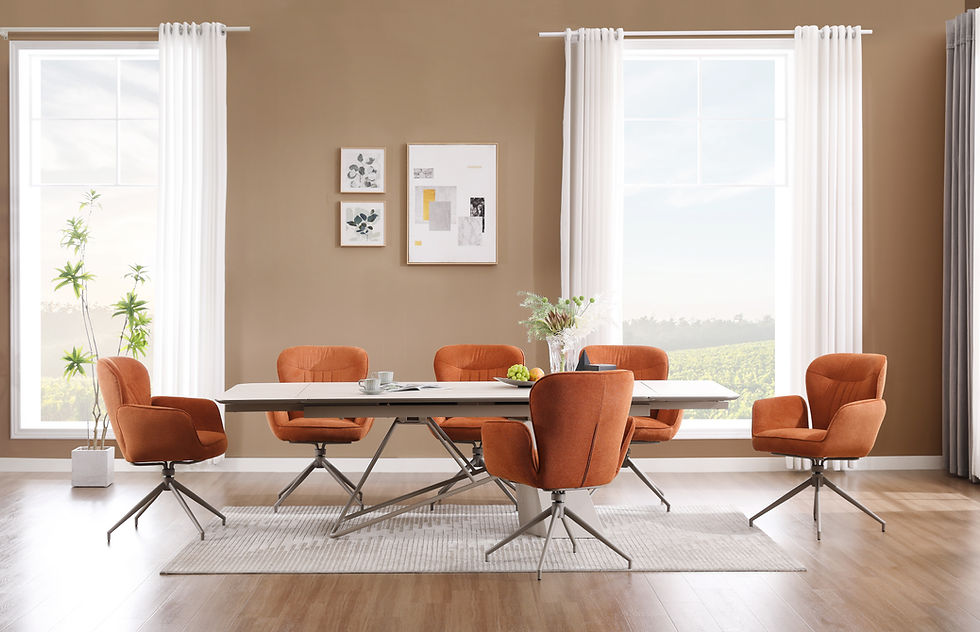
It’s beneficial to choose a partner that actively seeks to improve its testing methodologies. Technology, materials, and consumer expectations all evolve. A manufacturer who regularly updates or expands their test procedures is more likely to keep pace with changes in market demands and regulatory standards.
Establishing a Trusted Partnership with Specialized Manufacturers
Evaluating Production Processes and Certifications
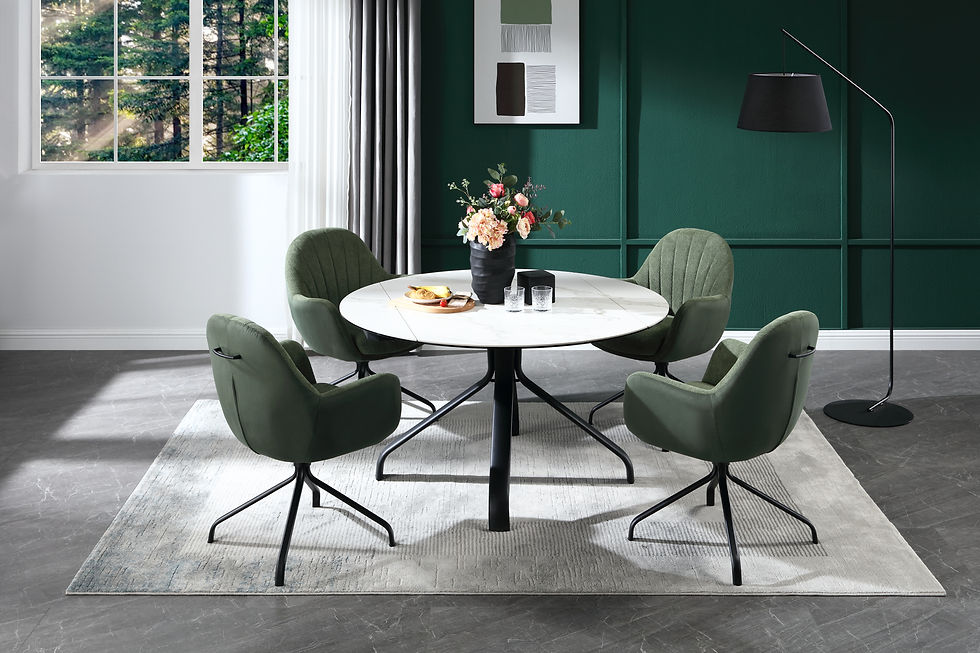
Finding the right supplier starts with assessing their production processes and credentials. A manufacturer with ISO9001 certification has already demonstrated a commitment to maintaining quality management systems that meet international benchmarks. Furthermore, years of proven experience in European markets can indicate familiarity with local tastes, regulations, and shipping logistics.
At ASKT, we’ve prioritized gaining certifications and building direct relationships in Germany, the Netherlands, Poland, and other European countries. Our involvement in these markets has guided us in tailoring our designs and testing procedures to match the nuanced expectations of end-users and retailers in different regions.
Ensuring Transparency

In any productive partnership, transparency is key. If a potential supplier seems guarded about their production lines, raw material sources, or testing procedures, it might be a red flag. Many reputable manufacturers welcome audits, be they in-person factory visits or virtual tours. At ASKT, we often encourage our partners to visit our 1,200-square-meter R&D center, which includes a sample production room, a testing laboratory, and a product showroom. This transparent approach helps foster trust and allows buyers to see how our operations function in real-time.
Maintaining Open Communication

Efficient communication prevents small issues from becoming bigger headaches. A supplier who provides prompt updates on production progress, addresses any concerns immediately, and offers solutions rather than excuses is an asset. Over the years, I’ve found that close communication between buyers and suppliers can shorten lead times, improve final product quality, and streamline logistics.
Choosing a partner that’s accessible through multiple channels—email, WhatsApp, and video conferencing—can make the entire collaboration process smoother. This is especially important when you’re managing large orders or tight timelines and need to make quick decisions.
Maximizing ASKT’s Quality Assurance Capabilities
For many furniture buying groups, collaborating with a specialized manufacturer like ASKT can simplify the entire journey of quality testing and assurance. Allow me to share how we approach this internally:

Early-Stage R&D Involvement
We operate four R&D centers across Bazhou, Anji, Huizhou, and Zhangzhou, all working closely with our main facilities. This networked approach allows us to explore new materials, fabrication techniques, and design elements swiftly. By involving our research and development teams from the onset, we can address potential weak points before mass production begins.
Rapid Customization and Prototyping
We offer the capacity to produce custom samples in about 10 days, thanks to our experienced pattern cutter who’s been honing his craft for 20 years. If you need chairs with a specific fabric or unique hardware, you can see prototypes fast. This speeds up your decision-making process and makes it easier to bring new designs to the market. In a competitive environment, being able to pivot quickly or introduce fresh models can be a game-changer.
Extensive Testing Resources
We’ve built a comprehensive testing facility that includes:
Load testing for seat and backrest
Seat impact simulations
Upholstery color fastness checks
Backrest durability evaluations
Armrest endurance tests
Leg stability tests
These tests replicate the full lifecycle of a dining chair, helping us identify any vulnerabilities ahead of shipment. Because our QC team is intimately familiar with each testing apparatus, they can promptly interpret results and make adjustments.
Stringent QC Oversight
We employ 11 full-time quality inspectors, each equipped with a video recorder for full transparency. This eliminates guesswork about how the inspection was conducted. From verifying weld consistency to ensuring correct foam density, every step is captured in a documented process. Should any concerns arise, we can review the footage and identify exactly where and how a product might have deviated from standards.
Realistic Showroom Simulations
Our 1,200-square-meter R&D center houses six sample rooms, each simulating a typical family home setting (often modeled after real German household layouts). Here, we arrange furniture in settings that mirror daily life. This approach lets us observe how chairs blend with different types of interiors, how they function in a social setting, and whether design tweaks might be needed.
Eco-Friendly Packaging Initiatives
We’ve adopted honeycomb paper protection in our packaging to reduce plastic use, aligning with a broader movement toward sustainability. While it may not affect the chair’s performance, eco-conscious packaging resonates with many European buyers and end-users. It shows a commitment to the environment and can enhance the overall perception of your brand.
Finalizing Your Quality Inspection Process

The Importance of the Pre-Shipment Inspection
A final quality check before shipment helps confirm that each chair meets your specifications. It’s essential for catching any last-minute issues. If your supplier is equipped with thorough QC protocols, you may feel comfortable relying on their final inspection reports, although external checks by third-party inspectors can add an extra layer of assurance.
During this stage, it’s wise to confirm:
The correct labeling and packaging are used.
All dimensions match your approved samples.
Upholstery is free of stains or blemishes.
Hardware is secure and properly installed.
Logistics and Storage Considerations
Once the chairs leave the factory, they still need to arrive at their destination in good condition. Planning out logistics thoughtfully can help maintain product quality. If the destination climate differs significantly—such as higher humidity—you might need additional protective measures. Careful scheduling and well-organized warehousing strategies also reduce the risk of damage due to mishandling or prolonged storage in unsuitable conditions.
Ongoing Feedback Loop
Quality assurance doesn’t end once the shipment arrives. Gathering feedback from retailers, hospitality clients, or other end-users can uncover trends that might not be obvious during the initial testing phases. At ASKT, we appreciate hearing from our clients about how our chairs hold up over time or in unique environments, because this real-world data can guide future improvements. Encouraging a two-way exchange of feedback ensures that the design, materials, and processes remain aligned with current market demands.
Conclusion: Raising the Bar on Dining Chair Quality
As someone who has spent two decades helping European buyers source high-quality dining chairs, I believe that effective quality testing is one of the most pivotal steps in securing strong, durable, and comfortable products that resonate with end-users. By focusing on the entire lifecycle of a dining chair—from frame construction and upholstery choices to rigorous safety tests and final inspections—furniture purchasing groups can drastically reduce errors, returns, and costly delays.
Investing in quality control also pays dividends by strengthening your relationships with retail partners and boosting your organization’s reputation for reliability. In a marketplace where word of mouth travels quickly, consistent quality can be your best marketing tool.
Here at ASKT, we are committed to making that process as smooth and transparent as possible. With:
A robust, multi-site R&D capability
Comprehensive testing facilities
A dedicated QC team wearing video recorders
ISO9001 certification and extensive experience in Europe
Eco-friendly packaging solutions
—we have set ourselves up to serve as a dependable partner for any furniture purchasing group seeking to simplify and enhance their supply chain. If you’re looking for a solution that not only meets but exceeds the industry’s stringent quality standards, I invite you to get in touch.

Let’s work together to deliver outstanding dining chairs that elevate your customers’ experiences.
Contact Information
Name: Sunbin Qi (CEO of ASKT)
Email: sales@sinoaskt.com
Website: www.asktfurniture.net
WhatsApp: +86 18912605997
Thank you for reading, and I look forward to collaborating with you to bring the best in dining chair quality to homes, restaurants, offices, and beyond. If you have questions or need assistance, my door (and inbox) is always open. Let’s make your next sourcing project a success from start to finish.






Comments